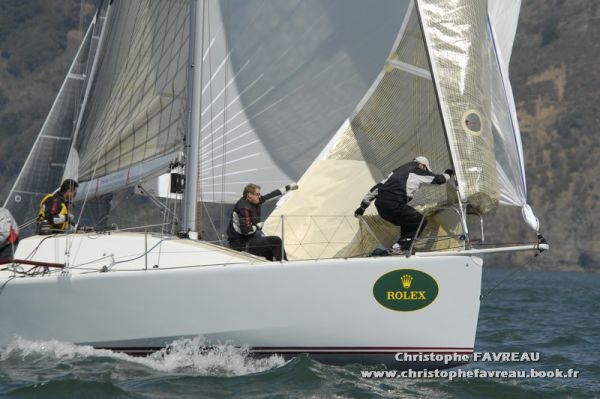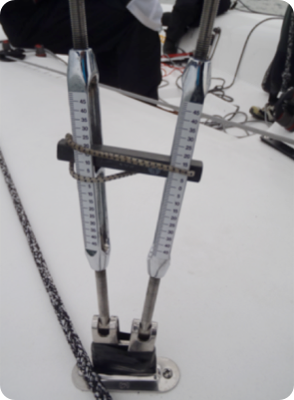From Elliot / Pattison Sailmakers website, another early season boat tune-up post.
The basis for tuning a boat starts with an understanding of what it is you are trying to accomplish. While many one design classes publish tuning guides the top sailors realize that those guides are merely starting points and have to be adjusted to fit individual boats, sails, and even the way that different people sail.
The basis for tuning your boat should start with balancing the boat. This means having your sailplan balanced with your hull shape or having the Center of Effort of your sails (the CE) in line with the Center of Lateral Resistance (CLR) of the your hull. This gives you a neutral helm because you don’t have to have the rudder turned one way of the other to keep the boat going straight and the associated drag that causes.
The balance will change on different points of sails and in different wind speeds so it is necessary to set your boat up to match the predominate conditions you sail in, and understand the changes you can make to correct for it in different conditions. Because of the shape in the sails the CE shifts further forward when sailing upwind and shifts aft as the apparent wind moves aft; it also moves forward as the boat heels more. You will feel this as you start to head off from an upwind course onto a reach, the helm loads up more until you turn far enough down that you can let the main well out which then shifts the CE back forward.
The adjustments you can make to you boat are limited, you can’t very well move your keel around to change the CLR so that really leaves only the adjustment to what you do with your rig to move the CE. To reduce helm you need to move the CE forward in to increase helm you need to move the CE aft. The two adjustments you have to do this are the headstay length which will change the rake and the location of the mast butt fore and aft; both at the base and in a boat that has a keel stepped mast at the deck level. And in boats that have ratings based on measurements you can’t change the location of the mast at the deck level because that will change your J measurement. In most one-design boats there will be a measurement in the rules for the location of the mast at deck level and it will usually have a small plus or minus range to allow for some movement.
To find the starting place for you boat keep in mind that you want to have a small amount of weather helm (2 to 3 degrees) while sailing upwind because the angle on the rudder does produce some lift and it also makes the boat easier to sail upwind; it gives you more “feel”. Start tuning in 5 to 7 knots of breeze. Sail upwind with just enough heel to make the sails set well and then adjust your mast rake to get that slight weather helm. If you sail where you have a lot of light air, and a lot of chop or swell, you may want to rake the mast a touch further aft to give you even more feel as this can help in steering in those conditions. If you sail in more medium air or flat water you can generally go with a little less rake and less helm which produces less drag.
As the wind increases and you have more weather helm because the boat is heeling more you can shorten the headstay which reduces mast rake and moves the CE forward. This will decrease weather helm. For the same reason you want to let the backstay off and let the mast move forward going downwind. Here you aren’t trying to produce any lift at all but do want to balance the boat to a neutral position and minimize drag.
These things are all meant to get you to a basic starting point, the point from which you go on to make the changes necessary for different conditions and different sail combinations. But keep one thing in mind, more weather helm is more drag and you want to keep that at a minimum. I know it “feels” better to have more helm in light air but that doesn’t mean it is faster. One of my great memories, and best learning moments, was sailing in the MORC Internationals one year. Don Martin, who is one of the best sailors I know, was sailing with us and in the medium distance race we had very trying conditions. The wind had been blowing in the 20 to 25 knot range across Lake Ontario and built up a big swell. Shortly after the start is died off and we were sailing up wind in big leftover swell and 3 or 4 knots of breeze. The boat felt terrible. I kept asking for helm, “ heel the boat over, pull the traveler up, make the sails fuller, do SOMETHING”, it feels terrible! Finally Don turned around, looked right at me, and said “Will you just shut up, we brought you to drive the boat, not to feel”. That settled me down in a hurry, we went on to win that race and the Championship but it was a lesson I’ll never forget.

